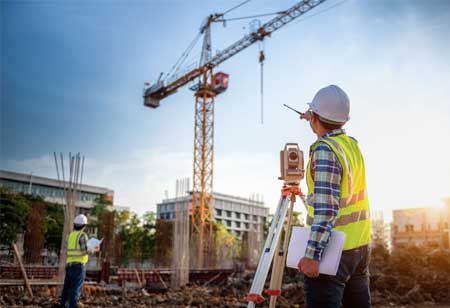Thank you for Subscribing to Construction Business Review Weekly Brief

Surveying and Construction Forecasts for 2023
2022 was the most significant year in modern history from an economic, political, and business perspective.
2022 was an eventful year marked by significant economic, political, and business changes with wide-ranging implications. Several key trends influence the development of both construction and surveying, as they are closely related industries.
Accelerating net zero action is urgent
The UN report noted that carbon reduction plans and actions have been "woefully inadequate" despite the pledges from the previous year. For instance, approximately a quarter of the UK's carbon emissions are attributed to the built environment. With targets to cut emissions by 68 percent by 2030 (compared with 1990 levels), more than current policy and measures will be required. In 2023, climate action will intensify unlike ever before, and we won't be able to lower ambitious, unrealistic goals.
Construction contractors will focus on reducing energy demand pre- and during construction and operational energy efficiency. Monitoring to support leaner designs (e.g., using fewer materials with high embodied carbon, such as concrete and steel), evaluating tolerances, managing risks associated with thinner concrete, and reducing prop usage can make a huge difference.
Increasing reliance on renewable energy
Energy Security Strategy and government efforts toward decarbonization will likely lead to a more decisive move toward renewable energy. Construction sites have already begun shifting away from diesel generators and machinery to those powered by renewable energy sources like wind and solar. Hybrid power, off-grid battery storage systems and green hydrogen will become increasingly popular.
Reuse and refurbish rather than demolish
Refurbishing a property is more likely than demolishing it. There is much debate regarding the pros and cons of each (for instance, think of the M&S building at 1-4 Marble Arch, where demolition made more sense from a carbon perspective).
Since more than 60 percent of all waste generated comes from the construction and demolition industry, retrofit should be prioritized as the most sustainable option most of the time. The current macro landscape and material costs allow for recycling substantial materials rather than starting from scratch.
Pipeline projects for major infrastructure
Roads and rail remain on the agenda, particularly nuclear (to strengthen energy security and mitigate energy price instability). The lack of capital spending keeping pace with inflation in the last Budget could prevent specific other plans from being delayed. The water and sewage infrastructure need to be invested more to increase resilience, which is critical given that most waterways are polluted, and sewage spills happen regularly. Storm overflow systems are overloaded due to heavy rainfall due to climate change. Legislative updates may also be enacted.
A more innovative way to manage data
As digitalization continues to accelerate, increasingly intelligent information models will emerge. Building Information Modeling (BIM) and its application in construction will grow, and as it moves from 3D to 4D and 7D, it will gain game-changing capabilities for utilizing data sets. Boosting productivity, generating data-driven insights, and conducting more accurate whole lifecycle assessments are just a few benefits of using it. Moreover, it facilitates cross-team collaboration by creating a common data environment.
The construction industry, like most others, will be affected by AI and machine learning technologies that reach new heights and provide better and faster data analytics. The trend of 3D laser scanning equipment seamlessly integrating with software platforms will also propel surveying forward through sophisticated data collection methods.








